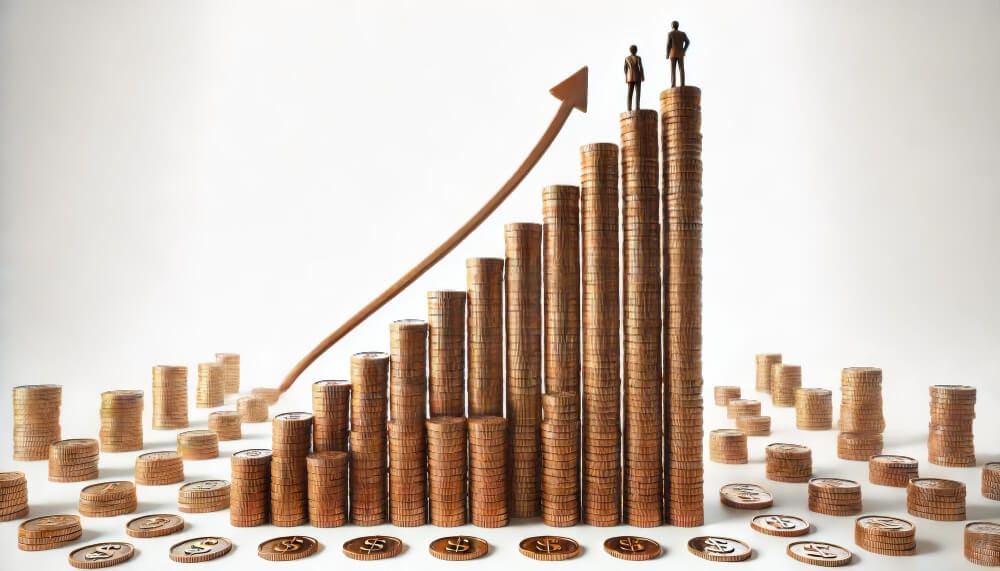The world of forex trading is vast and intricate, with numerous factors influencing currency values. One such critical indicator is the ISM Non-Manufacturing PMI. For those new to the term, understanding this can seem like deciphering a secret code. But don’t worry, we’re here to break it down in a simple, conversational manner.
What is ISM Non-Manufacturing PMI?
The ISM Non-Manufacturing PMI is an economic indicator derived from monthly surveys of non-manufacturing businesses. It stands for the Institute for Supply Management’s Non-Manufacturing Purchasing Managers’ Index. Think of it as a report card for the service sector, reflecting the economic health of this part of the economy.

The Basics of PMI
PMI, or Purchasing Managers’ Index, measures the prevailing direction of economic trends in the manufacturing and service sectors. A PMI above 50 indicates expansion, while below 50 forex signals contraction. The ISM Non-Manufacturing PMI specifically looks at the service industry, which includes sectors like retail, finance, and healthcare.
Importance of Non-Manufacturing PMI
Why should forex traders care about the non-manufacturing PMI? Simple – the service sector makes up a significant portion of many economies, especially in developed countries like the US. When the PMI shows growth, it suggests a robust economy, which can strengthen the national currency. Conversely, a declining PMI can signal economic trouble, leading to a weaker currency.
Components of the ISM Non-Manufacturing PMI
The ISM Non-Manufacturing PMI isn’t just a single number; it’s a composite index. It includes several components, each offering insights into different aspects of the service sector.
Business Activity
This component measures the overall activity in the service sector. An increase indicates more demand and economic growth, while a decrease signals a slowdown.

New Orders
New orders reflect future demand. A rise in new orders suggests that businesses are optimistic about future growth, which can be a positive sign for the currency.
Employment
Employment levels indicate hiring trends. Higher employment means more people are working, earning, and spending, which boosts the economy.
Supplier Deliveries
This component measures how fast suppliers are delivering goods. Slower deliveries can indicate higher demand, which might lead to inflationary pressures.
How ISM Non-Manufacturing PMI Affects Forex Markets
Forex traders keenly watch the ISM Non-Manufacturing PMI because it can cause significant market movements. Let’s delve into how it influences currency values.
Positive PMI Reports
When the PMI report shows an increase, it generally signals economic strength. Forex traders interpret this as a positive sign for the national currency, leading to potential appreciation.
Negative PMI Reports
Conversely, a drop in the PMI can indicate economic weakness. Traders might see this as a sign to sell the currency, expecting it to depreciate.

Using PMI Data in Trading Strategies
Incorporating PMI data into your trading strategy can give you an edge. Here’s how you can use this information effectively.
Short-Term Trading
For short-term traders, the PMI release can be a pivotal event. Monitoring the report and market reaction can help in making quick trades to capitalize on immediate market movements.
Long-Term Trading
Long-term traders use PMI data to gauge economic trends. Consistent positive PMI readings suggest a stable and growing economy, which can inform long-term investment decisions.
Case Studies: PMI Impact on Forex Markets
To understand the real-world impact, let’s look at a couple of case studies where the ISM Non-Manufacturing PMI significantly influenced forex markets.
The 2020 Pandemic Impact
During the early months of the COVID-19 pandemic, the ISM Non-Manufacturing PMI plummeted, reflecting the abrupt halt in economic activity. This led to a sharp decline in the value of the USD as traders anticipated economic turmoil.
Recovery Phase
As the economy began to recover, positive PMI readings indicated a rebound. Forex traders responded by buying USD, leading to its appreciation.

Common Mistakes to Avoid When Trading PMI Data
While PMI data is invaluable, it’s crucial to avoid common pitfalls that can lead to costly mistakes.
Overreacting to a Single Report
One mistake is placing too much emphasis on a single PMI report. Economic indicators can be volatile, and a single report doesn’t necessarily indicate a long-term trend.
Ignoring Other Economic Indicators
PMI should be used in conjunction with other economic indicators. Overlooking factors like GDP growth, employment reports, and inflation can lead to misinformed decisions.
Tools and Resources for Monitoring PMI Data
Staying updated with PMI data is essential for informed trading. Here are some tools and resources to help you.
Economic Calendars
Economic calendars list upcoming PMI releases and other crucial economic events. Websites like ForexFactory and Investing.com provide detailed calendars.
News Platforms
Staying tuned to financial news platforms like Bloomberg and Reuters ensures you don’t miss critical updates and expert analyses.

Integrating PMI Data with Technical Analysis
Combining PMI data with technical analysis can enhance your trading strategy. Here’s how to blend these approaches effectively.
Identifying Trends
Use technical analysis to identify market trends and align them with PMI data. For instance, a positive PMI in an uptrend can reinforce buying signals.
Setting Entry and Exit Points
Technical indicators like moving averages and RSI can help set precise entry and exit points based on PMI-driven market movements.
The Future of ISM Non-Manufacturing PMI in Forex Trading
As global economy evolve, the role of PMI in forex trading will likely change. Staying adaptable and informed is key to leveraging this indicator effectively.

Technological Advances
Advancements in technology and data analytics will enhance the accuracy and timeliness of PMI data, providing traders with more precise insights.
Global Economic Shifts
Shifts in global economic power may alter the significance of PMI readings from different regions, requiring traders to adjust their strategies accordingly.
Conclusion
The ISM Non-Manufacturing PMI is a vital tool in the forex trader’s toolkit. By understanding its components, impact, and how to integrate it into trading strategies, you can make more informed decisions and potentially increase your trading success. Remember, while PMI is powerful, it’s just one piece of the puzzle. Combining it with other economic indicators and technical analysis will give you a more comprehensive view of the market.
FAQs
1. What is the difference between the ISM Manufacturing PMI and the ISM Non-Manufacturing PMI?
The ISM Manufacturing PMI focuses on the manufacturing sector, while the ISM Non-Manufacturing PMI covers the service sector. Both are crucial but reflect different parts of the economy.
2. How often is the ISM Non-Manufacturing PMI released?
The ISM Non-Manufacturing PMI is released monthly, typically on the third business day of the month.
3. Can the ISM Non-Manufacturing PMI predict currency movements?
While it’s not a crystal ball, the PMI can provide valuable insights into economic trends, which often influence currency movements.
4. What other indicators should I consider alongside the ISM Non-Manufacturing PMI?
Consider GDP growth, employment reports, inflation rates, and other PMIs to get a fuller picture of economic health.
5. How can I stay updated with PMI data?
Use economic calendars, financial news platforms, and subscribe to reports from reliable sources like the Institute for Supply Management.
